The Achilles and Achilles tendinopathy – A More in-depth look
The Achilles attaches onto the calcaneus at the back of the foot. People often describe pain at their heel or just above it. Athletes normally describe pinching while running or walking, worse in the morning or at night. In terms of activity the pain often decreases post warm up only to return later in the run but as the distance increases this pain can return.
The aetiology and pathogenesis of the injury aren’t fully understood. Achilles tendinopathy is not a true inflammatory condition. Certainly inflammation exists but this is not the primary driver of pathology or pain. Recent research also tells us that collagen fibre tearing exists but this is the consequence of other processes. Cell changes in the tendon also exist and seem to be the primary driver of pathology and pain.
In football, Achilles injuries represent 2.5% of all injuries and 96% of these injuries are Achilles tendinopathies. Interestingly the re-injury rate is 27% which represents a significant challenge to both physiotherapists and the Achilles. Like all sports, older players/athletes are more frequently injured.
Differential Diagnosis of Achilles tendinopathy
There are a variety of different types of Achilles tendinopathy.
Mid portion tendinopathy, Plantaris Induced tendinopathy (mid portion but medial and higher), Longitudinal tears, Partial ruptures, Micro tears, Fascia Crura tears, Paratenonitis, Insertional tendinopathies, Hagglunds related tendinopathies are examples of the various types of tendon issues experienced by athletes.
Neuromuscualr changes (torque/work/emdurance) have been shown to improve clinical outcomes in Achilles and patellar tendinopathies. Good muscle coordination leads to increasedenergy efficiency, greater elastic recoil and less heat production. This gives an athlete potential to improve or protect from tendinopathy (O'Neill et al, 2016)
When the muscle tendon unit does not function as a shock absorber and spring, there is reduced energy efficiency and greater amplitude of tendon strain or greater accumulative load. With greater energy absorption (more heat), the risk of triggering a cellular response to tendinopathy increases.
We also know mechanical factors improve with load. There are improvements in tendon structure but we do not know where this takes place. More recent research suggests that this may happen in the inter fasicular matrix but to date this is still up for debate.
Both eccentric/concentric and isometric based work can be used to attain these neuromuscular changes. Isometric based work for the tendon itself has been shown to be useful. For the muscle, slower heavy resistant load (both concentric and eccentric). The area where a lot of rehab falls down is around the biomechanical and kinetic chain factors that influence the tedon. 3d and two D biomechanical data shows us that the tendon can be put under huge stress from joints above and also from foot control especially in running.
The other area of massive importance is from the brain. Isometric exercise can normalise cortical inhibition for at least 45 minutes, so therefore could be important in warm ups and before strength training.
Exercise can also improve motor excitability and auditory cues have been shown to be helpfulful in improving tendon excitability (Rio et al 2016).
From a running point of view, a study by Kulmala et al, has shown 84% of maximal voluntary contraction is needed for running. So this increases the need for increasing plantarflexion strength. O Neill et al have shown that twice body weight is an appropriate level of strength.
The University of Leicester group also advocate avoiding certain activites during an Achilles tendinopathy. Ice and NSAIDS(longer term use) prevent adaptation. Palpation is a poor measure of recovery. The traditional treatment of frictioning/rubbing the tendon should be avoided as it irritates the tendon. Needling the tendon is also likely to irritate the tendon.
The most important and influential factor will be effective load management in both rehab and in preventing Achilles tendinopathies. The rehabilitation should be progressive, exposing the athlete to central and peripheral nervosu system changes. Individualised rehab is extremely important. Endurance athletes in particular undergo massive stress with this type of injury and this increases with every day out of competition. Athletes need to be prepared for a longer time period in rehabilitation, with a focus on heavier rehabilitation for >3 months. This is a massive change on focus from the traditional eccentric regimes of 3 x 15- heel drops.
Prevention of Tendon pathology?
Preventing tendon pathology will vary from tendon to tendon. The age at onset, the degree of loading and even the gender of the athlete will affect pathology. One of the most important factors in preventing future tendon injuries is the maintenance of an Achilles regime in the off season. This allows athletes maintain the required plantarflexor strength and ankle/foot control required.

